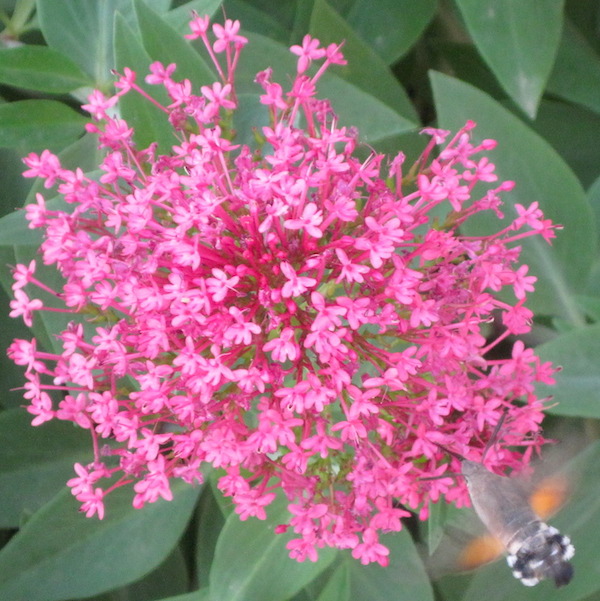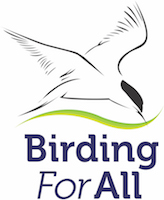This was a very short family holiday near Bodrum on the Mediterannean coast of Turkey. Our villa was secluded and mostly paved but the poolside did attract a number of insects and other invertebrates (mostly ants and mosquitos!) There were probably fewer than there should have been as we suspect that the area was regularly sprayed with insecticide by the caretaker.
However, all day long butterflies of a number of species fluttered by, mostly Large Whites and Meadow Browns but the occassional unidentified fritiliary, what looked like a Ringlet and a very handsome swallowtail of some sort. The only decent photo I managed was of a common UK species.
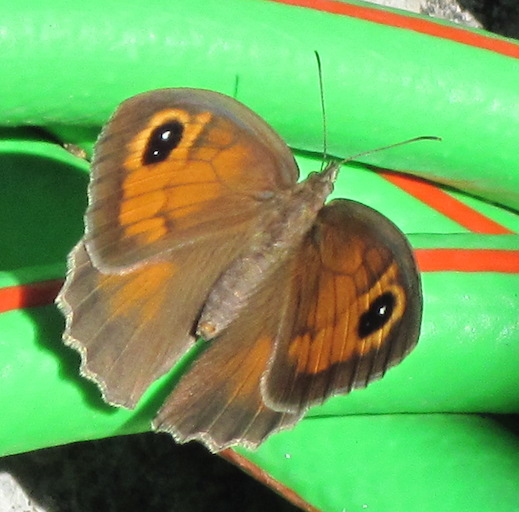
This Meadow Brown settled on the garden hosepipe. Note it has two white spots on one wing and only one on the other!
There were many beetles and very large grasshoppers and this chap which I thought was a dragonfly but is actually a Robber Fly – not a group I had ever heard of let alone seen. Apart from the oblviously fly-like wings (it is a true fly) it was very similar to the one dragonfly I managed to photograph.
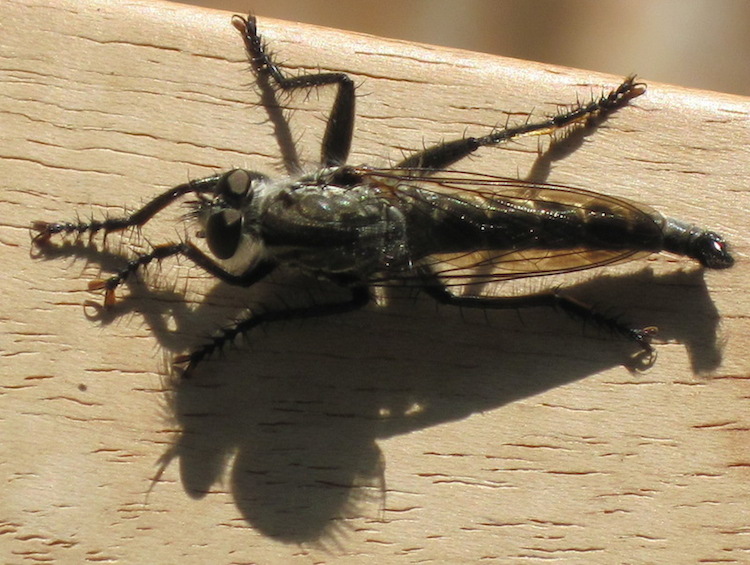
The text below is taken from Wikipedia… fearsome!
The Asilidae are a family in the order Diptera, the true flies. The common name for members of the family is the robber flies. The Asilidae are cosmopolitan, with over 7000 described species. Latreille was the authority for establishing the family in 1802.[3] The Asilidae, together with Bombyliidae and Therevidae, are the most representative families of the superfamily of Asiloidea and they form one of the most characteristic groups of the lower Brachycera.
Robber flies have stout, spiny legs and they have three simple eyes (ocelli) in a characteristic depression on the top of their head between their two large compound eyes.[4] They also have a usually dense moustache of stiff bristles on the face; this is called the mystax, a term derived from the Greek mystakos meaning “moustache” or “upper lip”. The mystax has been suggested to afford some protection for the head and face when the flies deal with struggling prey; various Asilidae prey on formidable species including stinging Hymenoptera, powerful grasshoppers, dragonflies and even other Asilidae, in fact practically anything of a suitable size. Some Asilidae do however specialise in smaller prey, and this is reflected in their more gracile build.
In general the family attacks a very wide range of prey, including other flies, beetles, butterflies and moths, various bees, ants, dragon and damselflies, ichneumon wasps, grasshoppers, and some spiders. They do so apparently irrespective of any repugnatorial chemicals the prey may have at its disposal.[5] Many Asilidae when attacked in turn do not hesitate to defend themselves with their proboscides and may deliver intensely painful bites if handled incautiously.
Below is the only dragonfly I managed to get a picture of. It is probably a Black Stream Glider or Indigo Dropwing Trithemis festiva – the shadow effect makes it look like it has double the wings it should have.
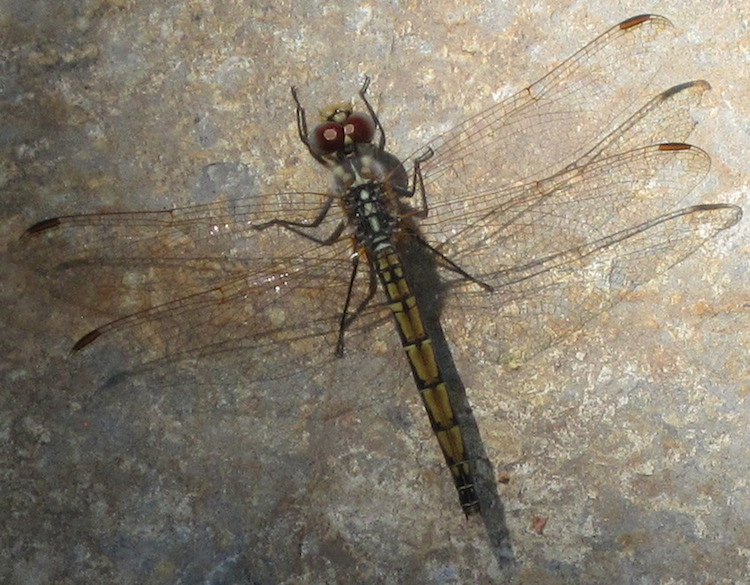
Anyone who can ID the copper beetle please let me know… the grasshopper is perhaps 6cm long excluding the incredible antenna. The copper beetle around one centimeter and the black shield bug around two centimeters.
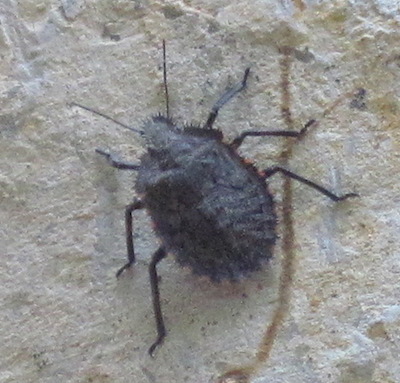
Thanks Stuart Read for letting me know that the above is a late instar of the shield bug Mustha spinosula – for anyone who doesn’t know (like me until a few months ago) ‘instars’ are the stages through which a shield bug goes from grub to adult.
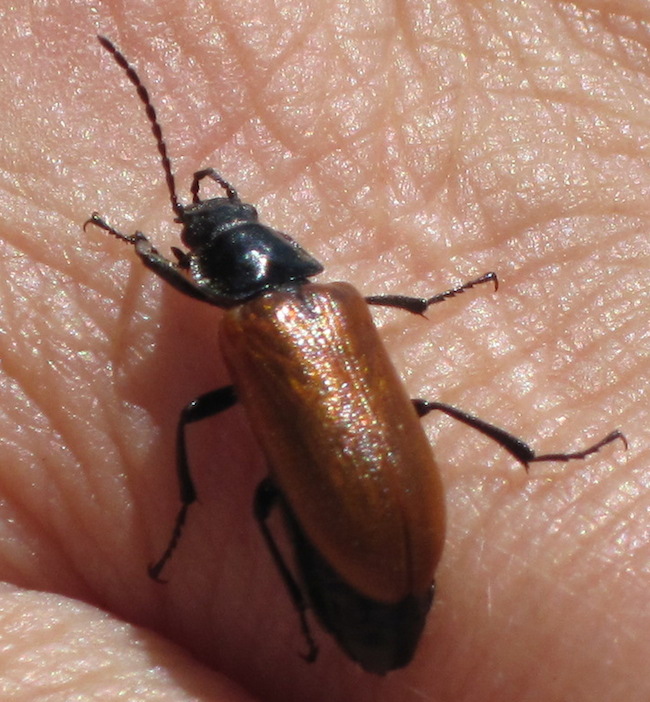
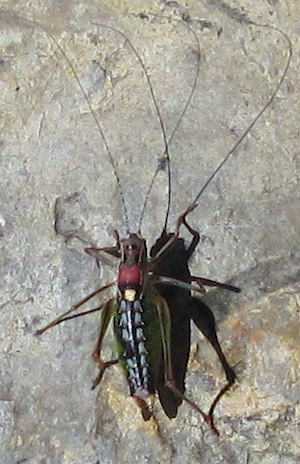
I am told the above Bush Cricket is probably Barbitistes serricauda (Thanks Paul Tout)
We also had a brief appearance from this Ladybird Spider Eresus sandaliatus. It is like an inch long tarantula and looks fearsome despite its small size. They apparantly pack a wallop too… not deadly but like a wasp sting that lasts a lot longer!
I took several photos before my arachnophobic wife spotted it and applied a hand-held shoe with etreme prejudice!
This species occurs in the UK and one last colony in Dorset has recently been the subject of captive breeding and release which has grown the remaining 56 individuals to over 1000! It has recently been introduced to other Dorset sites including Arne RSPB.
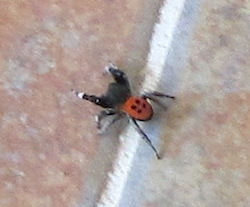
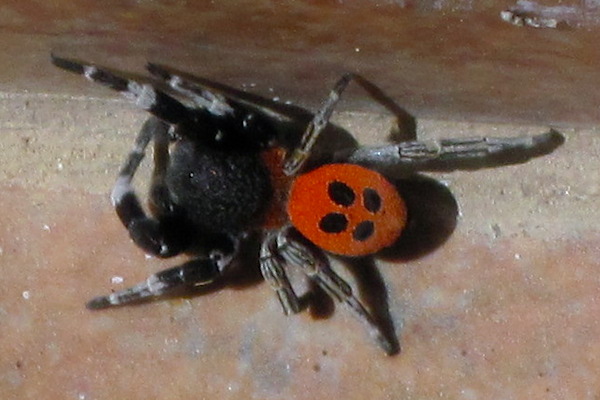
She was less prejudicial to this fine Hummingbird Hawkmoth that visited the flowers each day.
